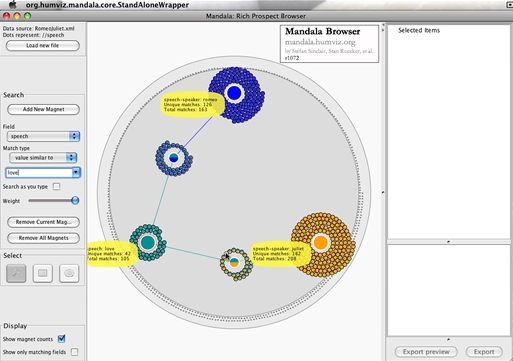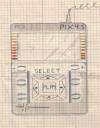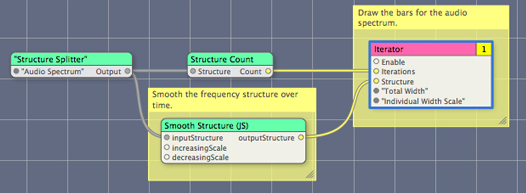
My colleague Stan Ruecker has been create short online movies of humanities computing software tools he is involved in like the Mandala Browser and the Digital Profiles rich prospect browser. These are in the tradition of videos like A Vision of Students Today from the Digital Ethnography folk. There is also the TEI Encoding of Dylan’s Subterranean Homesick Blues. Neat idea – we should get more comfortable with YouTube as a way of conveying ideas.
Category: Streaming Media
Monty Norman and the James Bond theme song
A couple months ago I stumbled on an intriguing connection. Monty Norman who is credited with the theme song for James Bond apparently adapted it from the score for Bad Sign, Good Sign, a tune that he had written for an ill-fated stage version of Naipal’s “A House for Mr Biswas.” See Monty Norman – The first man of James Bond music. That the James Bond theme song turns out to be based on a song meant to be sung by Mr Biswas is some sort of post-colonial irony.
Here are the lyrics to Bad Sign, Good Sign start,
I-I was born with this unlu-ucky sneeze and what is wo-orse I came into the the wo-orld the wrong way round. Pundits all agree that I-I’m the reason why…
YouTube – TEI Encoding of Dylan’s Subterranean Homesick Blues
Ray Siemens and friends have put up a TEI Encoding of Dylan’s Subterranean Homesick Blues on YouTube as “socio-cultural representation” of the Text Encoding Initiative (TEI) to counter the various videos of Tei, a popular Korean signer. There is a blog on the widget hosted by the ETCL at Victoria which explains the origins and authorship of the video.
Kane Kramer: Inventor of the Digital Audio Player?
 I came across a story that Kane Kramer, and English inventor, invented the digital audio player and patented it in 1979 though he lost the patent. Here is an interview with the Guardian.
I came across a story that Kane Kramer, and English inventor, invented the digital audio player and patented it in 1979 though he lost the patent. Here is an interview with the Guardian.
No. I like the iPod, but it feels a bit unfair to have to buy one. I could show you my drawings from 1979-82 and there is an iPod – same size, shape. It feels like mine.
Kane apparently testified for Apple when they were being sued by others.
RSS Feed Screen Saver

I just noticed that Mac OS X has a RSS feed screensaver that shows headlines in spiraling columns. When you see an item you want to read you press a key and it opens the item. It is an interesting example of live text visualization. You can see it on YouTube – RSS Feed on my Screen saver.

The RSS Screensaver seems to be built in a visual programming language for the Mac called Quartz Composer. From the documentation and discussions online it sounds like something one can play with easily (when I have the time.)
What would an academic screen saver look like?
High Performance Visualization
 I’m working with the folks at our local HPC consortium, SHARCNET on imagining how we could visualize texts with high resolution displays, 3D displays, and cluster computing. The project, temporarily called The Big See has generated an interested beta version. You can see a video on the process running and images from the final visualization here, Version Beta 2.
I’m working with the folks at our local HPC consortium, SHARCNET on imagining how we could visualize texts with high resolution displays, 3D displays, and cluster computing. The project, temporarily called The Big See has generated an interested beta version. You can see a video on the process running and images from the final visualization here, Version Beta 2.
One of the unanticipated insights from this project is that the process of building the 3D model, which I will call the *animation*, is as interesting as the final visual model. From the very first version you could see the text flowing up and the high frequency words jostling each other for position. Words would start high and then slide clockwise around. Collocations build up as it goes. We don’t have the animation right, but I think we are on to something. You can see Version B2 as an MP4 animation here.
Now we will start playing with the parameters – colours, transparency, and weight of lines.
Put PowerPoint on your iPod – Engadget
I was asking myself how if I could use a PDA or iPod for presentations instead of a laptop and came across some articles like HOW-TO: Put PowerPoint on your iPod Photo from Engadget. The idea is that you export your presentation as a series of photos which can then be played out as video to a monitor or video project. (Note that they don’t go out as data.)
 I was wondering about this reading about the now discontinued Margi Presenter-To-Go that works with the Palm line. They provide cables and stuff so you can run a data projector from a Palm PDA with enough memory. Alas they have given up on this. Will an iPod Touch version come along?
I was wondering about this reading about the now discontinued Margi Presenter-To-Go that works with the Palm line. They provide cables and stuff so you can run a data projector from a Palm PDA with enough memory. Alas they have given up on this. Will an iPod Touch version come along?
iKaraoke from Griffin
 In the category of cool technology for your iPod has to be the Griffin Technology: iKaraoke. This microphone and iPod connector can be used to sing along to your favorite tunes. It apparantly “isolates the lead vocal track, then fades it, giving your voice room to make that favorite tune yours.”
In the category of cool technology for your iPod has to be the Griffin Technology: iKaraoke. This microphone and iPod connector can be used to sing along to your favorite tunes. It apparantly “isolates the lead vocal track, then fades it, giving your voice room to make that favorite tune yours.”
Even better, they have software, the TunePrompter, that you can download and use to create a video with the lyrics syncronized to the tune. The free (and beta) software then creates a video for uploading to the iPod to work with the iKaraoke.

Very neat, even if I hate karaoke.
As It Happens, Privacy, and the Mechanical Turk
As It Happens on CBC Radio just played a good double segment on “Google Eyes”. The first part looked at the Amazon Mechanical Turk task looking for Steve Fossett’s plane on satellite images. The second part looked at privacy issues around street level imaging from outfits like Google.
Mechanical Turk (Artificial Artificial Intelligence) is a project where people can contribute to tasks that need many human eyes like looking at thousands of satellite images for a missing plane. It reminds me of the SETI@home project which lets users install a screen saver that uses your unused processing cycles for SETI signal processing. SETI@home is not part of a generalized project, BOINC that, like the Mechanical Turk, has a process for people to post tasks for others to work on.
The Privacy Commissioner of Canada announced yesterday that she has written both Google and Immersive Media (who developed the Street View technology used by Google) “to seek further information and assurances that Canadians’ privacy rights will be safeguarded if their technology is deployed in Canada.” The issue is that,
While satellite photos, online maps and street level photography have found useful commercial and consumer applications, it remains important that individual privacy rights are considered and respected during the development and implementation of these new technologies.
This is a growing concern among privacy advocates as a number of companies have considered integrating street level photography in their online mapping technologies.
In street level photography the images are, in some cases, being captured using high-resolution video cameras affixed to vehicles as they proceed along city streets.
Google, according to the commission on the radio, has not replied to the August 9th letter.
History of Technology Videos
One of the educational virtues of YouTube is that one can now find historic footage about computers like the 1984 Macintosh Commercial by Ridley Scott above or the Apple Shareholder Meeting where Steve Jobs introduced the Macintosh. Many of the videos posted are amateur (and bizarre) efforts, but many are interesting as historic documents themselves, like Computer History – A British View from 1969.
I haven’t found any really good lists of links to online video, but here are some starting points:
- History of Technology (Videos/Photos/PPoints) is a blog with a number of interesting videos and slideshows.
- Internet Archive: Computers and Technology features hundreds of items from television shows.
Has anyone found a good list of what is out there?